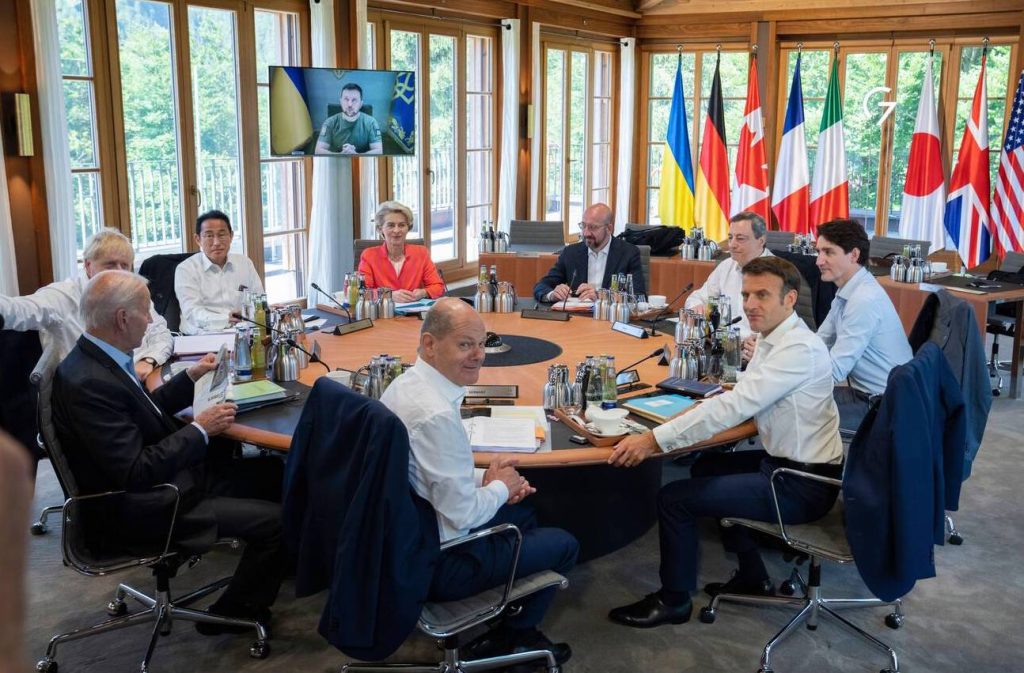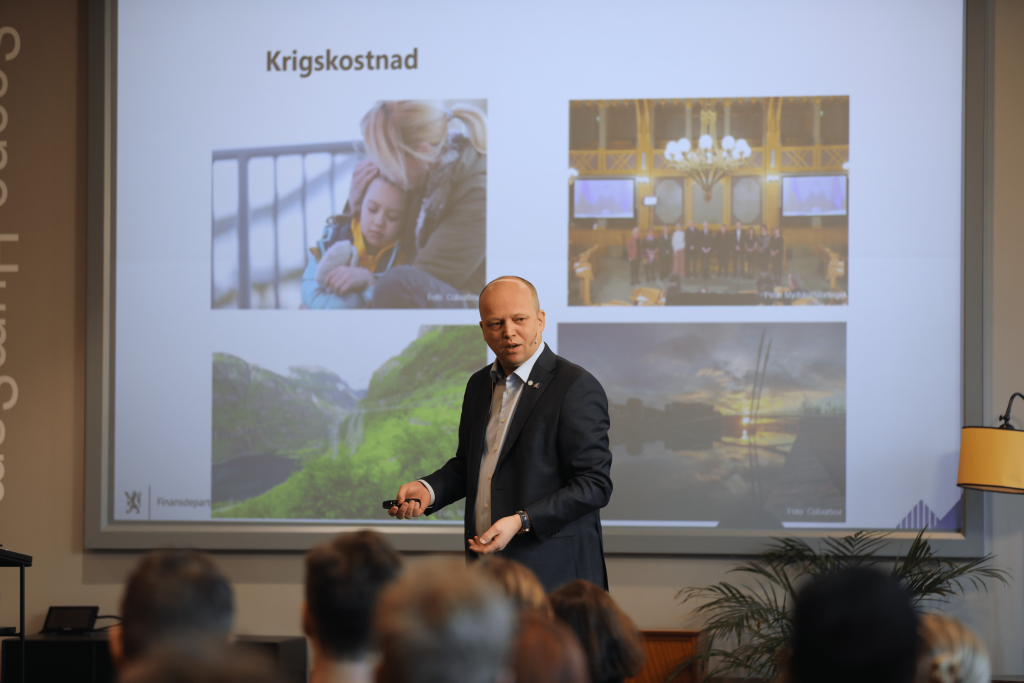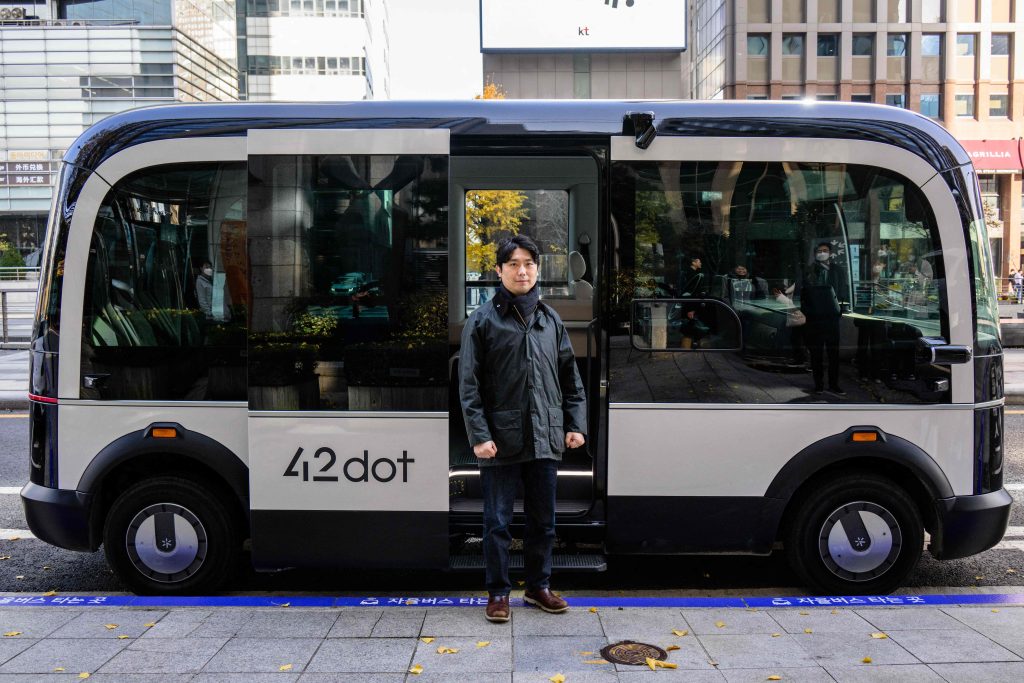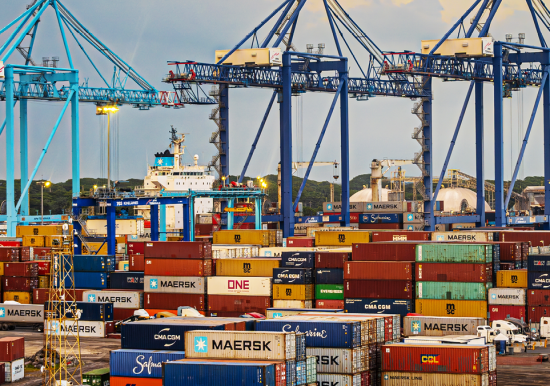
Building Shared Prosperity
The global economic mood is darkening. The ongoing polycrisis is derailing any post-pandemic boost. The United Nations expects world output growth to slow from an estimated 3% in 2022 to 1.9% in 2023, one of its lowest in recent decades.1 UN Secretary-General, António Guterres has urged governments not to fall into “short-term thinking or knee-jerk fiscal austerity that exacerbates inequality, increases suffering and could put the SDGs (Sustainable Development Goals) farther out of reach”.2 That will be a tall order for developed and developing economies, many of which have yet to fully recover from the pandemic.
Governments with strong financial and economic muscles are at an advantage in mounting a robust response without having to rely on external financing or aid. That advantage comes with practising robust financial stewardship and developing sustainable and inclusive economies. Financial stewardship lies in sustainably acquiring, prudently allocating, and fairly distributing public funds. Attractive and competitive markets create jobs and economic opportunities that are more resilient to shocks, while generating financial resources for governments. In a highly globalised world, a country’s global influence and reputation
expands the scope for cross-border trade, capital, and opportunities. These characteristics are reflected in the Chandler Good Government Index’s (CGGI) pillars of Financial Stewardship (Pillar 4), Attractive Marketplace (Pillar 5), and Global Influence & Reputation (Pillar 6).
In responding to crises, governments have a suite of demand-side and supply-side fiscal and monetary policy levers as well as risk management tools at their disposal. Governments can impact the economy through the scale and structure of government spending, changing the level and types of taxes, and government borrowing. On the other hand, central banks can indirectly target economic activity by influencing the money supply in an economy through interest rate adjustments, bank reserve requirements, as well as buying and selling government securities and foreign exchange.
Fiscal Policy Levers
In the thick of a crisis, urgent fiscal measures are often needed to keep households and businesses afloat and protect jobs. When the spread of COVID-19 infections prompted restrictions and lockdowns, most countries implemented some form of cash transfers, although the scale differed. The US federal government sent out unprecedented stimulus cheques totalling USD 931 billion to 165 million Americans—about half the population. In Liberia, where half of the population lives below the national poverty line, less than 15,000 households, about 1.3% of the population, received emergency cash transfers. On the other hand, wealthy countries such as Belgium and Sweden with well-developed social safety nets, provided few pandemic-related cash handouts. Many governments injected wage subsidies to stem job losses. The Australian government implemented one of the largest labour market interventions in its history – the AUD 130 billion (USD 87 billion) “JobKeeper Payment” wage subsidy scheme for affected businesses. It also provided loans and grants to businesses, enhanced tax concessions and deferred tax payments, and loan guarantees to help SMEs with cash flow.

Governments can intervene through demand- and supply-side policies to stimulate the economy. In the 1980s the US implemented supply-side measures to counter prolonged stagflation—dubbed Reaganomics after the US president at the time—focused on tax cuts for individuals and businesses, decreased social spending, and deregulation such as removing price controls on oil and gas, and liberalising some industries including financial services. The US economy experienced a period of growth with lower unemployment and reduced inflation.
On the other hand, demand-side policies such as strategic public investments in areas such as education, health, digital infrastructure, and climate change can further strengthen resilience to shocks. Japan’s “Abenomics” in 2013 attempted to jolt the economy out of its long deflationary slump with a three-pronged approach combining fiscal expansion, monetary easing, and structural reform. The fiscal stimulus package included JPY 10.3 trillion (USD 105.4 billion) for public infrastructure projects, such as bridges, tunnels, and earthquake-resistant roads. While Abenomics helped to lift growth, it did not match its ambitious targets. It has, however, been credited for helping Japan to withstand subsequent economic shocks including the pandemic.
Monetary Policy Levers
This past year higher food and energy prices have driven up inflation globally, in many countries into the double digits. This erodes real incomes and squeezes living standards. The International Monetary Fund (IMF) has named taming inflation the highest priority for policymakers.3 Central banks in developing and developed economies continue to tighten monetary policy by hiking interest rates.
However, fighting inflation can be fraught, especially if monetary policies run up against vulnerable public finances. Tighter monetary policy alone had limited effect in Brazil when its economy experienced high inflation and one of its worst recessions from 2014 to 2016. One key underlying cause was excessive government spending—a large part constitutionally mandated—and loose fiscal and monetary policies. Between October 2014 and August 2016, the Brazilian central bank raised the interest rate by three percentage points to 14.25%. It announced lower inflation targets for subsequent years in a bid to anchor inflation expectations. The government introduced austerity measures in 2015, and an “expenditure ceiling” in 2016, which mandated zero real growth for federal primary expenditures for the next 20 years. By 2017, inflation had eased, but economic growth, though positive, remained feeble.
Managing Financial Risks of Shocks
Governments can take steps to mitigate the financial risks of shocks. Most OECD countries incorporate some budgetary flexibility such as allowing for reallocation of funds across budget lines or government programmes. They also embed contingency reserves in their annual budgets for emergencies. Such measures were especially useful in the early response to COVID-19 when emergency financial support was diverted to healthcare, households, and other sectors. Governments also rely on non-cash, or balance sheet, measures such as loan or debt guarantee schemes, but these can expose governments to higher risks. The government of Netherlands put safeguards in place, such as a ceiling for the overall level of contingent liabilities, and clear criteria for taking on new contingent liabilities.
Countries have also come together to pool their risk using supranational platforms. Following a series of devastating hurricanes and tropical storms in the Caribbean in 2004, the Caribbean Community (CARICOM), worked with the World Bank and international donors to create the first inter-state risk pool, the Caribbean Catastrophe Risk Insurance Facility (CCRIF) in 2007. CCRIF created an emergency reserve fund supplemented by the collective purchase of reinsurance policies providing up to USD 140 million in additional coverage.
Transitioning from response to recovery requires more financial firepower. Compared to the 2008 GFC, when governments relied almost equally between monetary stimulus such as quantitative easing and fiscal stimulus, in the pandemic, governments have been more willing to both spend and borrow. While just over half of the fiscal stimulus for the GFC involved tax measures that were subsequently paid for by austerity programmes,4 budget deficits and debt levels have risen globally this time round.

Within the EU, the unprecedented scale and impact of the pandemic prompted its member states to band together to expand their access to financial support through the NextGenerationEU (NGEU). Unlike the 2009 Euro debt crisis, the EU acted swiftly this time to deploy large-scale financing mechanisms. NGEU is designed as a EUR 806.9 billion (USD 870 billion) temporary instrument to boost the EU’s immediate recovery, as well as its longer-term transformation into a greener, more digitalised, and more resilient Europe. The core component of the NGEU is the EUR 723.8 billion (USD 780 billion) Recovery and Resilience Facility (RRF), which provides grants and loans to support reforms and investments in member states. Almost two-thirds of RRF funding has been allocated to Italy and Spain, two of the EU’s worst-hit economies. The NGEU effectively pools debt obligations. It allows the European Commission to leverage the EU budget, joint guarantees from member states, and its established track record, to scale up borrowing on behalf of the EU at relatively low cost and redistribute the funds to its member states.
Bolstering International Relations to Garner Support
In an interconnected world, governments need to bolster and safeguard their diplomatic networks, economic links, international partnerships, and country “brand”. These relationships between states are a key source of power influencing outcomes in a crisis.
Following the outbreak of the war in February 2022, by year end the Ukrainian economy had shrunk by 30%.5 Ukraine intensified efforts to seek diplomatic, economic, and military support from the international community. It has been able to shore up strong support internationally— its soft power increased the most among 121 nation brands as measured by Global Soft Power Index 2023.6 International donors have stumped up funding for Ukraine to keep essential services running and meet critical humanitarian needs. The Group of Seven (G7) nations announced economic support to Ukraine of USD 39 billion for 2023. The IMF is finalising a USD 15.6 billion four-year loan package for Ukraine to provide immediate financial assistance and support structural reforms for post-conflict rebuilding.7

Positioning for Economic Recovery
To position their economies for recovery, governments can take advantage of changing global trade and investment priorities. Recent geopolitical risks, commodities shocks, and supply-chain disruptions mean many companies are looking for alternative offshore manufacturing bases, especially across Asia.8 There are emerging trends towards “nearshoring” or “friendshoring”, which will have a significant impact on the future patterns of global trade and investment.9
Meanwhile for workers and citizens, in times of economic crisis, job-related inequities tend to deepen. Spain saw one of the sharpest GDP contractions in Europe in 2020 and job losses among low-income workers were four-times higher than for high-income workers. Furthermore, inequalities persist long after a recession ends.10 US households in the top income decile saw little change in the years after the GFC, but those in the bottom decile dropped sharply. One key reason is that labour markets tend to recover more slowly after a recession— some job losses, especially for low-wage workers, can be permanent, as their bargaining power and skills are chipped away. These are all deep-seated structural issues that rely on government to find the right mix of policies to build an attractive marketplace and sound economy based on the goal of shared prosperity.
Vietnam
The Vietnam economy was one of the few bright spots during the COVID-19 pandemic. It had one of the world’s higher GDP growth rates (2.9%) in 2020, at a time when most economies were contracting. In 2022, economic growth was 8%, the highest in 25 years. The country has been one of the world’s fastest-growing economies over the past three decades. Vietnam improved its overall ranking in the CGGI in 2023, moving up from 56th to 49th position, scoring notable gains in the Country Budget Surplus and Macroeconomic Environment indicators.
Vietnam’s openness to trade and investment and its model of FDI-led export-driven manufacturing helped to cushion the economic fallout of the pandemic. Since the “Doi Moi” economic reforms in the 1980s, robust FDI inflows allowed Vietnam to climb the value chain from garments and footwear to electronics and become a key node in global manufacturing supply chains. It joined the World Trade Organization in 2007 and has since signed several bilateral and multilateral free trade agreements (FTA), including with Japan, Korea, and the EU. Despite the onset of the pandemic, steady export demand, particularly for higher-tech electronics, kept factories in Vietnam running.
Vietnam has also been one of the big economic winners in an era of rising China-US tensions. It has successfully positioned itself to multinational companies as a viable alternative manufacturing hub to China, where pandemic restrictions and rising labour costs made supply chains more brittle in the trade-and-tech battle between the two superpowers.
This economic resilience has been accompanied by the government’s VND 350 trillion (USD 15.4 billion) socioeconomic recovery programme, the largest in Vietnam’s history, to reboot and accelerate the post-pandemic economy. A large share of the programme has been directed to infrastructure projects in transportation, digitalisation, water security, climate change, and disaster resilience. Drawing lessons from its 2008 stimulus package for the global financial crisis, the recovery programme has been designed to rein in the risk of real estate speculation and high inflation through balanced fiscal policies, interest rate policy, and managed cash injection.
Norway
Norway’s economic resilience is backed by a strong fiscal, monetary and financial governance framework. Norway consistently sits high in the CGGI, rising one place this year to fifth overall and remains second for Financial Stewardship. It jumped nine spots from 23rd to 14th in Global Influence & Reputation and rose five places to top the Nation Brand indicator.
Despite large oil and gas reserves in the North Sea, the government takes a prudent approach to budgeting that gives it ample fiscal buffer to counter shocks. Rather than using its oil and gas revenues directly like most hydrocarbon exporting countries, Norway’s budget relies on the profit generated by its sovereign wealth fund, the Government Pension Fund Global. Established in the 1990s to invest the surplus revenues of Norway’s oil and gas sector, it is one of the world’s largest with over USD 1 trillion in assets, all of which are held abroad to decouple it from the domestic economy. Conservative fiscal rules preserve the fund’s capital.

Transfers from the sovereign wealth fund are capped at 3% of its expected long-term real return, but are flexible enough to allow the government to draw down more in a crisis, as happened in 2020/2021 in response to the pandemic. Norway enjoys a strong net public asset position and central government debt is relatively low and issued solely to finance capital expenditure.
Norway has used its resource wealth to generate inclusive growth, notably by expanding its welfare state. The country has a strong social safety net, one of the lowest income inequalities in the world, and performs well in most measures of well-being. In the 2020 response to the pandemic, the government rolled out fiscal measures amounting to 4.4% of GDP. Measures included larger wage subsidies for temporary layoffs, more generous unemployment benefits, a subsidy for businesses to take back temporarily laid-off workers, expanded sickness and childcare, and more funding for education and training.
South Korea
Strong external demand, crucial to South Korea’s export-driven economy, supported the country’s recovery from the pandemic. South Korea offers an attractive business environment and moved up 12 places for Stable Business Regulations. Korea shares joint top ranking with several countries in the Government Debt indicator.
Economic restructuring in South Korea was already underway before the pandemic. The government announced the Korean New Deal in July 2020 to make the economy greener and more digitalised. Armed with KRW 160 trillion (USD 144 billion), the New Deal has two main thrusts—the Digital New Deal and Green New Deal. It aims to create more inclusive growth by expanding employment, 1.9 million new jobs by 2025, and strengthening social safety nets, including expanding unemployment insurance and social security programmes. A beefed-up version of the plan, dubbed Korean New Deal 2.0, was introduced in 2021 in response to the economic fallout of the pandemic.
Successive governments have channelled funding and resources into encouraging startups in a bid to diversify Korea’s conglomerate or chaebol-dominated economy. The “creative economy” initiative launched in 2013 provided funding for seed capital, incubators, and networking opportunities for entrepreneurs. The government has eased borrowing for SMEs by guaranteeing a large portion of bank loans. It has also encouraged Korean banks and large firms including chaebols to invest in start-ups. Big chaebols such as Samsung and Hyundai have launched their own start-up incubators. The capital, Seoul, ranks among the top start-up hubs globally and boasts a USD 177 billion start-up ecosystem, far ahead of the global average.11 Despite the pandemic, Korean start-ups attracted 78% more venture investment in 2021. The government has nurtured deep-tech clusters in areas such as biotechnology, AI and big data, fintech, advanced manufacturing and robotics, and IoT. It also became one of the first national governments to invest in the metaverse.

At the same time, the government has taken other steps to shape a more inclusive economy. It launched a Social Value Solidarity Fund in 2019 to support social ventures, with the government matching private funding for the fund. Korean state-led enterprises have been required to measure their social value performance since 2018. Some in the private sector have followed suit, such as SK Group, which became the first chaebol in 2018 to adopt double bottom line of social and financial returns to its businesses.
Tanzania
Tanzania has achieved relatively strong economic growth over the past decade, albeit from a low base. Despite a growing population and stark rural poverty, the overall poverty rate has declined. The resource-rich country’s GDP was growing 5-7% annually up until a pandemic dip of 4.8%in 2020 and 4.9% in 2021, but now looks set fair above 5% for 2022 and 2023. In July 2020, the World Bank upgraded Tanzania from low to lower-middle income status. While the country avoided a recession, the pandemic severely impacted tourism, a major foreign-exchange earner for Tanzania, but gold exports remained robust.
Despite a relatively low overall ranking in the CGGI, up three places to 80 in 2023, Tanzania enjoys some very bright spots. The country ranks 27th in the Country Budget Surplus and 18th in the Spending Efficiency indicators. It ranks 28th for Adaptability and its Nation Brand indicator has risen from 42nd to 36th place.
Tanzania has achieved macroeconomic stability through market-oriented reforms, prudent macroeconomic policies and disciplined fiscal policy. It has kept its current account balance largely in check, although the current account deficit has increased recently due to the rising cost of imports including oil, transport equipment, and iron. Most state-owned enterprises have been privatised. The government has also implemented measures to cut government expenditure and prevent waste of public funds. According to the World Bank, public spending in Tanzania has been relatively contained and generally lower than comparable countries in East Africa.12 Still, expenditure for the country’s socio-economic response and recovery plan increased the public deficit. While its public debt has increased from 24% of GDP in 2009 to 40% in 2020, the World Bank and IMF have assessed the country’s debt levels to be still manageable. In comparison, countries in the region that already had elevated public debt levels when the pandemic struck, have had far less fiscal space to implement pandemic-related response packages.

Tanzania has made controlling inflation an important policy aim, with the medium-term target set at 5%. Although the inflation rate spiked to 10-15% between 2008 and 2012, it fell to 3.5% by the end of 2019. Inflation in Tanzania is expected to stay within the central bank’s target rate despite global commodity prices pressures. The continued independence of the central bank is crucial as it take steps to modernise Tanzania’s monetary policy and transition from the reserve money programme to inflation targeting.
Endnotes
- United Nations (2023). World Economic Situation and Prospects 2023. New York.
- UNCTAD. (2023, January 25). Multiple crises unleash one of the lowest global economic outputs in recent decades, says UN report. UNCTAD. https://unctad.org/news/multiple-crises-unleash-one-lowest-global-economic-outputs-recent-decades-says-un-report
- International Monetary Fund. (2022). Development Committee: The Managing Director’s Written Statement October 2022. In IMF. https://www.imf.org/en/Publications/Policy-Papers/Issues/2022/10/15/Development-Committee-The-Managing-Director-s-Written-Statement-October-2022-524862
- OECD. (2009). OECD Economic Outlook Interim Report 2009. In OECD. OECD Publishing. https://www.oecd.org/newsroom/43125523.pdf
- The World Bank in Ukraine. (n.d.). World Bank. https://www. worldbank.org/en/country/ukraine
- Brand Finance. (2023, March 2). Russia Has Lost Soft
Power War with Ukraine– Global Soft Power Index 2023
| Press Release | Brand Finance. Brand Finance. https://brandfinance.com/press-releases/russia-has-lost-soft-power-war-with-ukraine-global-soft-power-index-2023 - https://www.imf.org/en/News/Articles/2023/03/21/pr2388-ukraine-imf-and-authorities-reach-staff-level-agreement-eff-arrangement#:~:text=Facility%20(EFF).-
,Mr.,577%20percent%20of%20Ukraine’s%20quota. - Global firms are eyeing Asian alternatives to Chinese manufacturing. (2023, February 20). The Economist. https://www.economist.com/business/2023/02/20/global-firms-are-eyeing-asian-alternatives-to-chinese-manufacturing
- Brugel. (2023). Reshoring, nearshoring or friend-shoring: What is the future of global supply chains? 2023 Transition Report “Business Unusual.” Bruegel | the Brussels-Based Economic Think Tank. https://www.bruegel.org/event/reshoring-nearshoring-or-friend-shoring-what-future-global-supply-chains
- Luiz, A., Da Silva, P., Kharroubi, E., Kohlscheen, E., Lombardi, M., & Mojon, B. (2022). BIS and the effectiveness of macroeconomic stabilisation policies Inequality hysteresis. Bank for International Settlements 2022. https://www.bis. org/publ/othp50.pdf
- Startup Genome. (n.d.). Top Reasons to move your startup to Seoul. Startup Genome. Retrieved April 5, 2023, from https://startupgenome.com/ecosystems/seoul
- Baunsgaard, T., Gigineishvili, N., Kpodar, R., Jang, B., & Joly,
H. (2016). United Republic of Tanzania: Selected Issues. In International Monetary Fund. https://www.imf.org/external/pubs/ft/scr/2016/cr16254.pdf
More Stories


Global Influence & Reputation Country Snapshot: Türkiye

